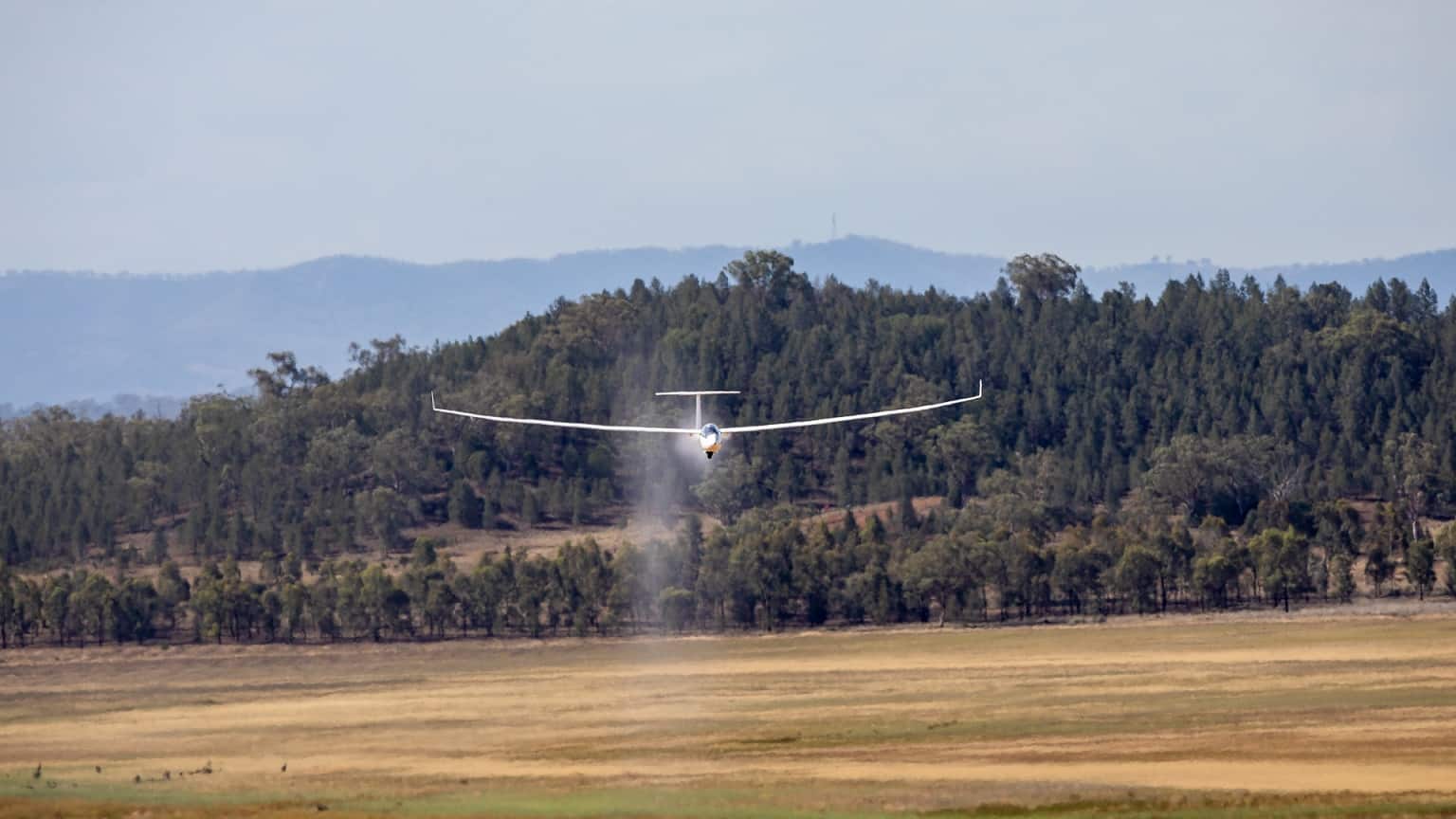
Regardless of whether the glider(s) concerned in any given operation are registered in Australia or a foreign country, foreign pilots operating in Australia under the auspices of Gliding Australia must be Gliding Australia qualified, be issued with Gliding Australia pilot authorisations for the tasks contemplated, and must be members of Gliding Australia and an affiliated club.

As Gliding Australia members, foreign pilots flying in Australia must comply with all aspects of normal Gliding Australia operational requirements, including applicable Civil Aviation Regulations (CARs/CASRs), the provisions of Civil Aviation Order (CAO) 95.4 and Gliding Australia Operations Manual, which can be downloaded from the Docs/Forms tab above.
All foreign pilots will be provided with a comprehensive briefing on Australian procedures (general and local) before flying as pilot-in-command. In particular, foreign pilots will need to demonstrate a working knowledge of the requirements for operating on Certified and Registered aerodromes, including requirements for operations in the vicinity of non-towered aerodromes and associated CTAF procedures, using Gliding Australia ‘Airways & Radio Procedures’ Manual, which can be downloaded from the Docs/Forms tab above.
Foreign pilots will also be provided with a safety and survival briefing if they have not operated in Australia before.
Foreign registered gliders operating in Australia must be type certified and hold a full Certificate of Airworthiness issued by a Contracting State. Pilots of gliders that do not meet these requirements will need to apply to CASA for flight approval. For further details, please contact Gliding Australia’s Chief Technical Officer, Airworthiness.
The pilot in command of a glider possessing the nationality of a Contracting State must not allow the glider to fly within, or depart from, Australian territory if the glider does not comply with the provisions of the Civil Aviation Regulations 1988 that are expressed to apply to such aircraft and the requirements of the Convention in respect of:
A glider registered in a non-Contracting State cannot fly in Australia without the approval of CASA and must operate in accordance with the conditions of that approval.
No person may operate a foreign registered glider within Australia as pilot in command unless that person is a current member of Gliding Australia; and
Maintenance of a foreign registered sailplane operating in Australia must comply with the requirements of the State of Registration. Any maintenance work to be undertaken in Australia can only be completed with the authority of the Contracting State. Neither CASA nor Gliding Australia can approve maintenance on a foreign registered sailplane.

All communications with Air Traffic Control or other airspace users MUST be in the English language.
Foreign Pilots must hold either a Flight Radiotelephone Operators Licence issued by their National Aviation Administration or a Gliding Australia Flight Radio Operators Logbook Endorsement before flying solo in Australia.
Foreign pilots for whom English is not their primary language and who do not hold an ICAO English Language Proficiency Level 4 (or higher) endorsement to their Licence must demonstrate to a Gliding Australia Level 1 or higher rated Instructor aviation English language proficiency and be issued with a logbook endorsement prior to flying in command.
Recognition of overseas Licences (or equivalent)
An overseas licence or certificate cannot be used for flying Australian Registered gliders.
Foreign pilots wishing to fly in-command of an Australian Registered glider and who hold an overseas ICAO Glider Pilot Licence, or EASA LAPL(S) / SPL, may convert their licence to a Gliding Australia Glider Pilot Certificate (GPC).
British pilots who do not hold a SPL/LAPL(S) may convert their BGA Cross Country Endorsement to a GPC.
New Zealand pilots may convert a CAANZ pilot licence with glider privileges, or their GNZ Cross-Country Pilot (XCP) certificate to a GPC.
Foreign pilots who do not meet the above requirements will need to be assessed to the GPC syllabus by their Australian CFI for the issue of a GPC.
Foreign pilots who cannot meet the requirements for the issue of a GPC may still fly in command of a sailplane provided they meet Gliding Australia operational requirements and fly under the direct supervision of their Australian Club.
To convert your overseas licence or certificate to an Australian GPC, please send a FULL copy of your licence or certificate, together with a FULL copy of the medical certificate required by the relevant licence or certificate, to the Executive Manager Operations.
Gliding Australia Medical Requirements are detailed at paragraph 3.2 of Gliding Australia Operational Regulations.
In most cases, foreign glider pilots will be able to self-declare their medical status.
In the event that a foreign pilot is unable to make a self-declaration because they:
then they must hold a valid Medical Certificate before commencing flying.
Foreign pilots who hold a valid:
may fly gliders in command while that Medical Certificate remains current.
Foreign pilots with a non-ICAO Medical Certificate as per (b) above will need to provide Gliding Australia’s Executive Manager, Operations with a copy of their Medical Certificate together with a copy (in English) of their State’s medical requirements for glider flying so that an assessment can be made as to acceptability.
For foreign pilots with an ICAO Class 1 or 2 Medical Certificate, the Club CFI can accept these but a copy must be retained for onforwarding to the Gliding Australia office.
Foreign pilots who do not hold an overseas issued Medical Certificate that is acceptable to Gliding Australia and who are ineligible to make a self-declaration will need to obtain a Medical Practitioner’s Certificate of Fitness from an Australian Registered GP using the Gliding Australia Form designed for this purpose.